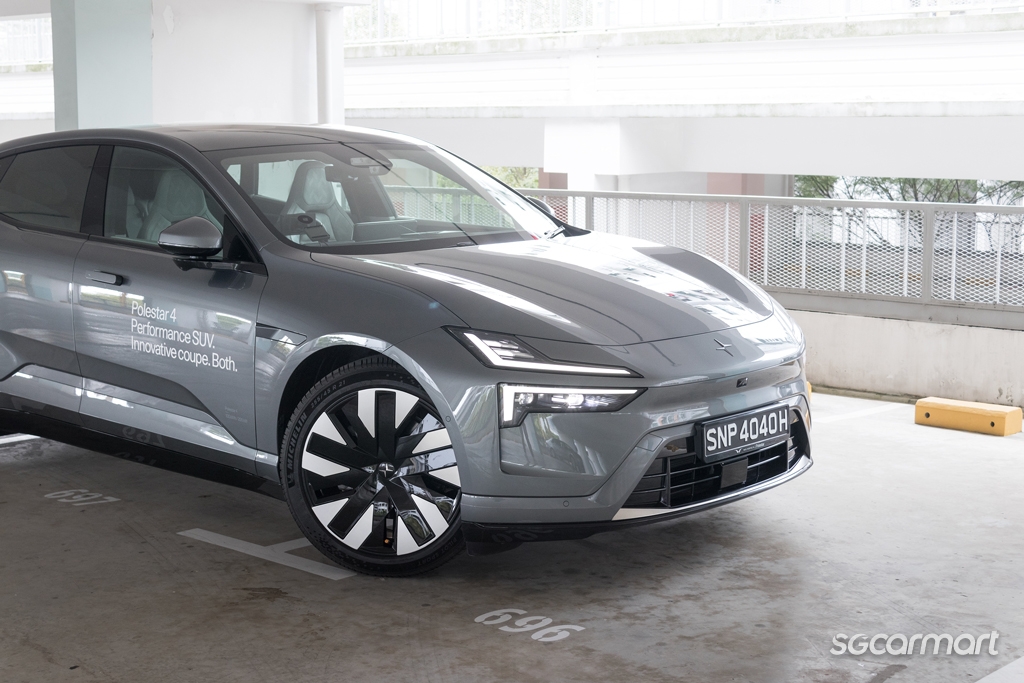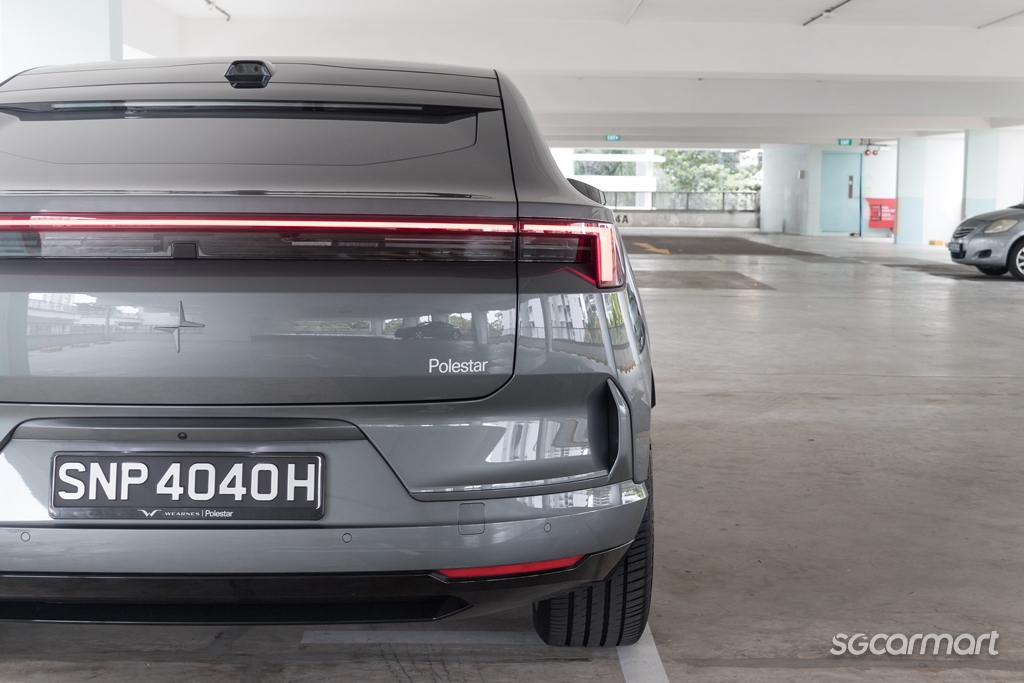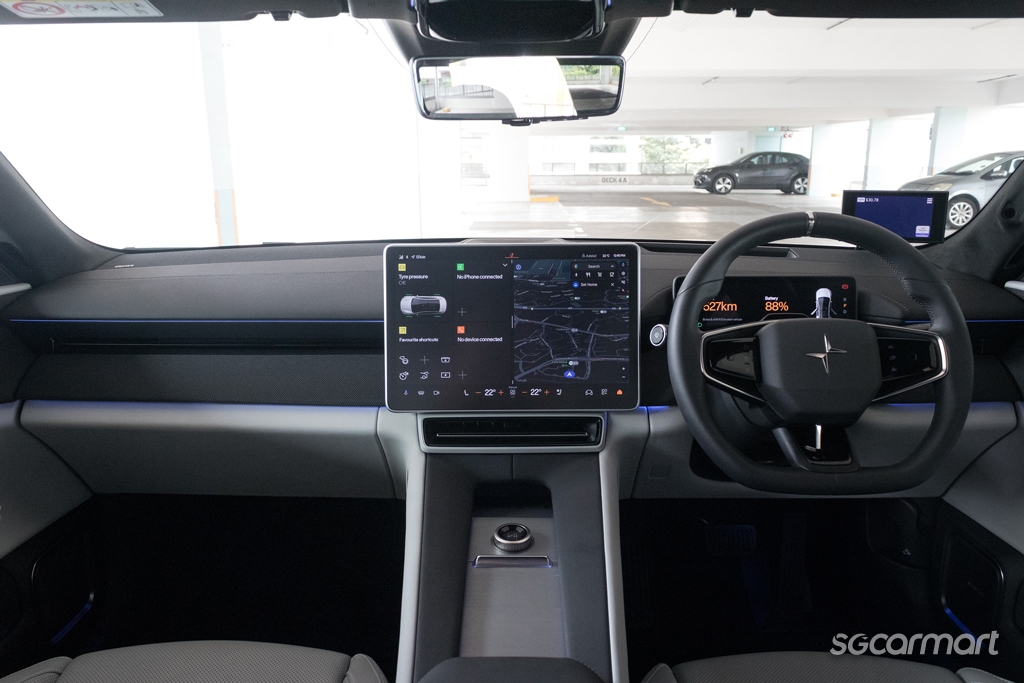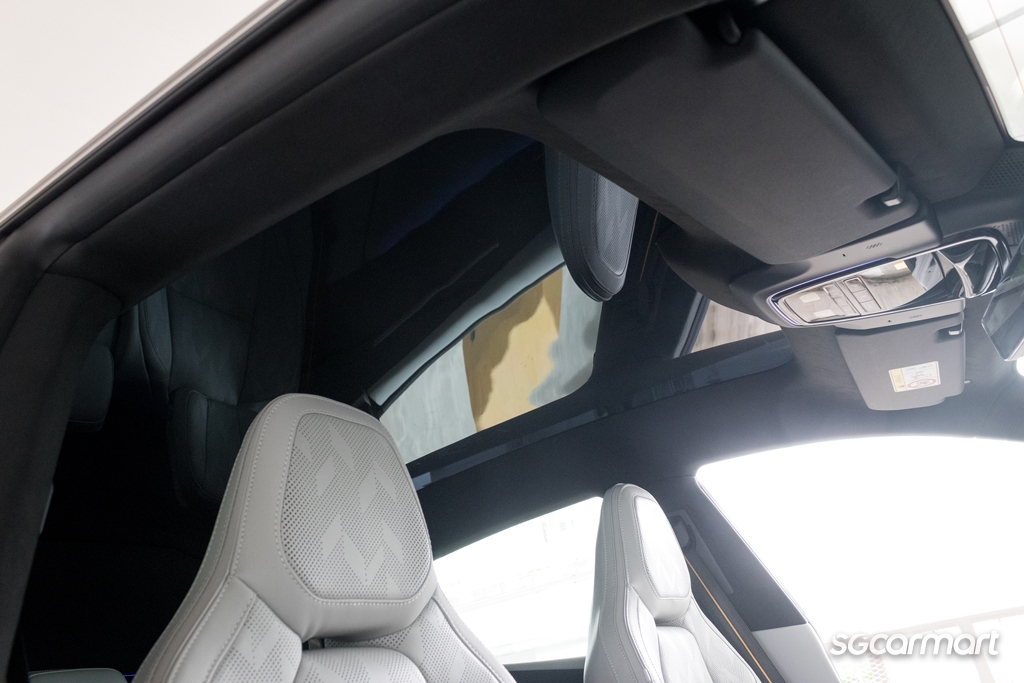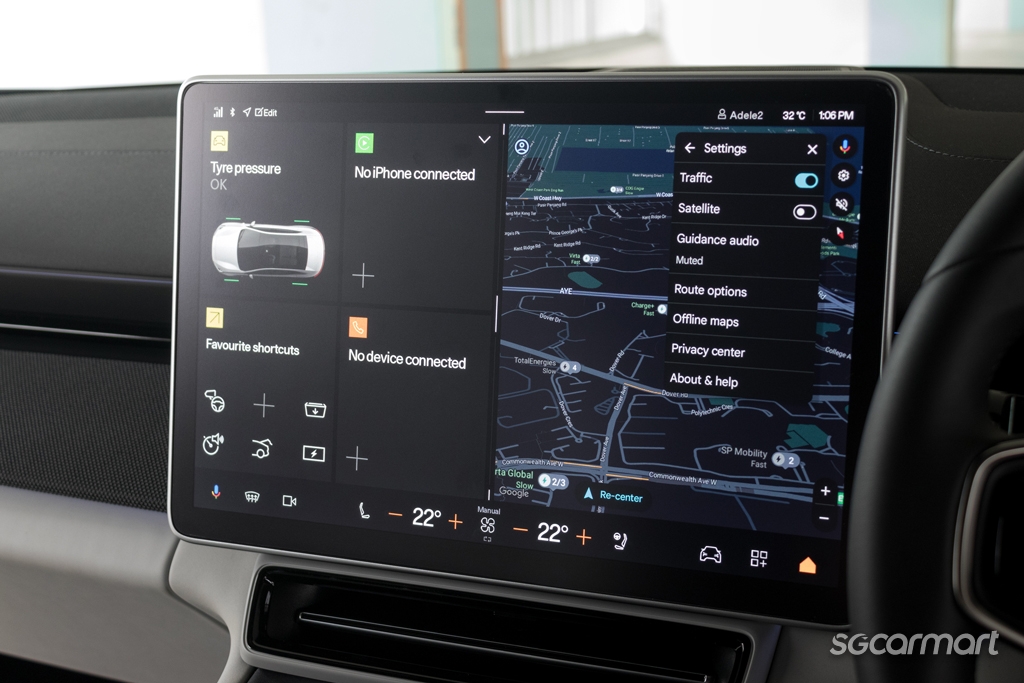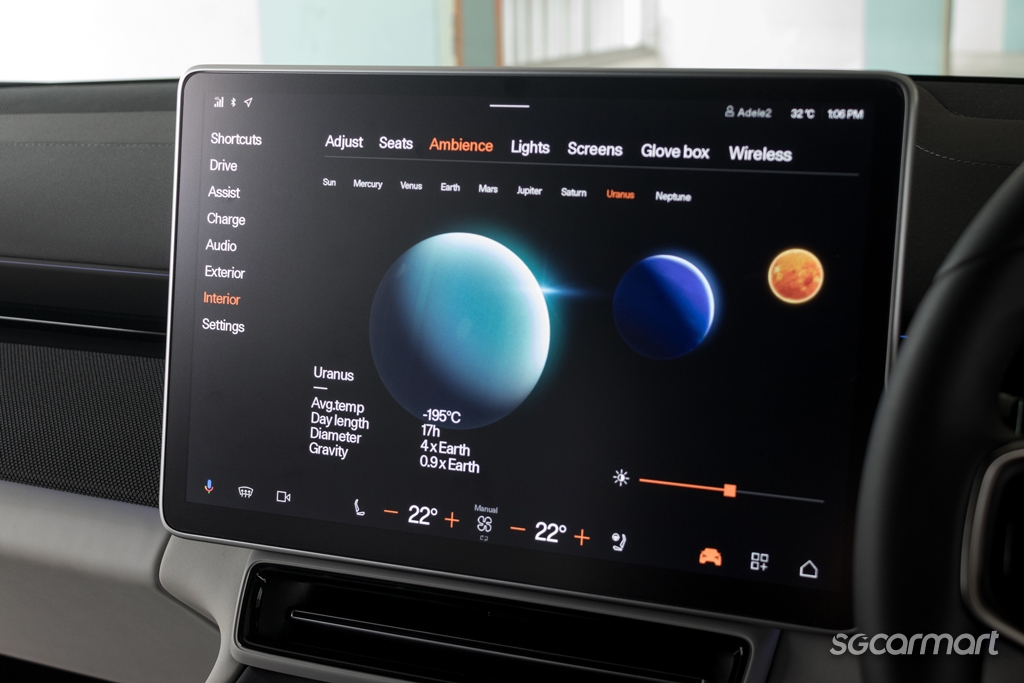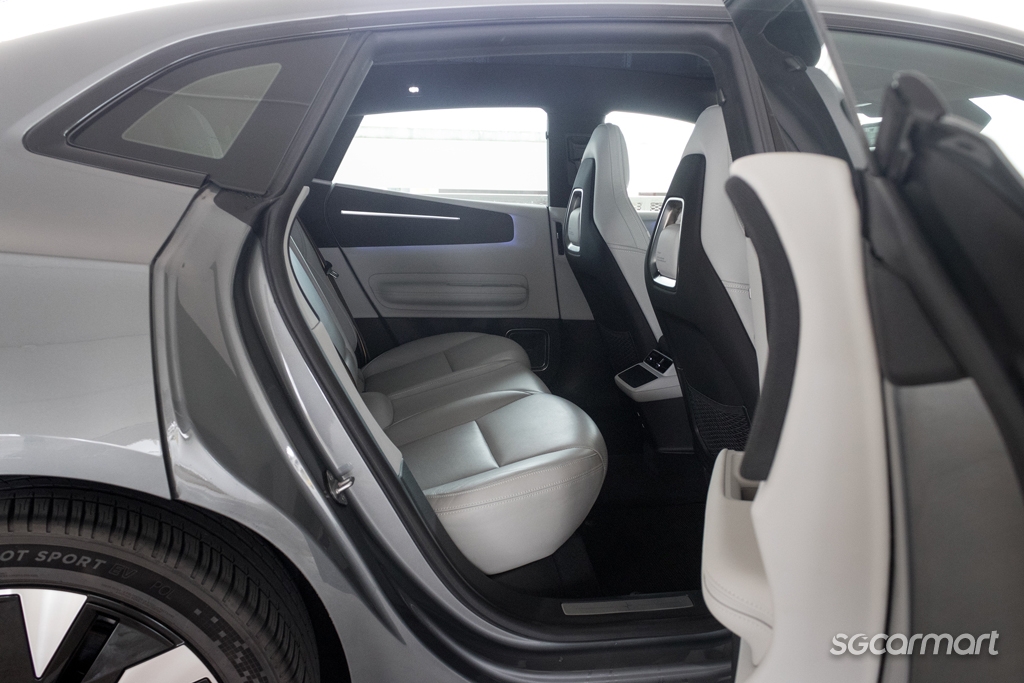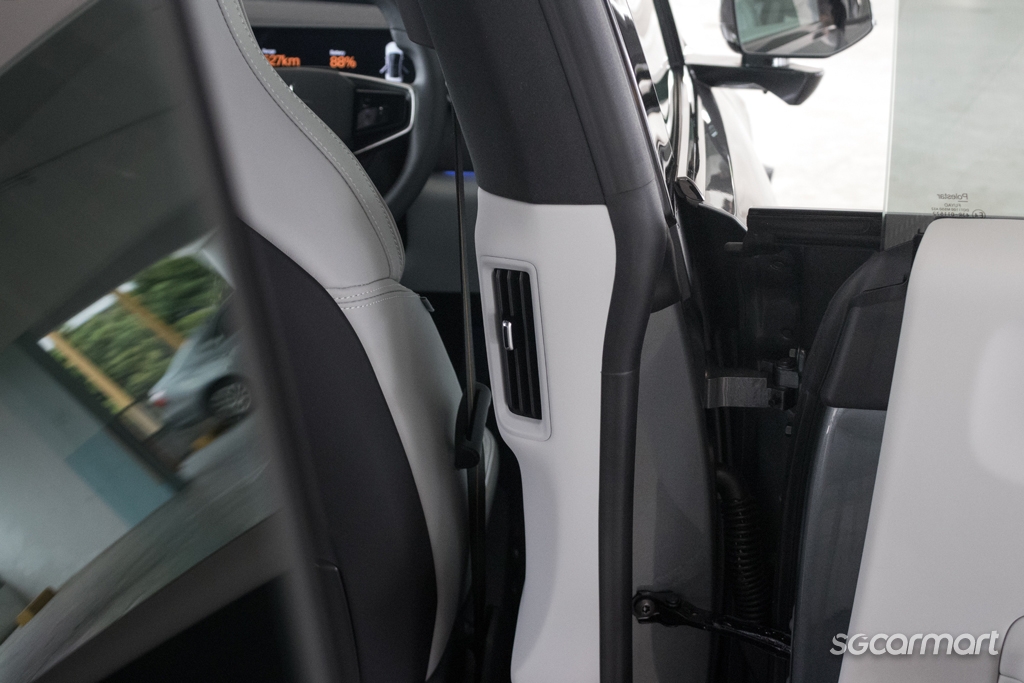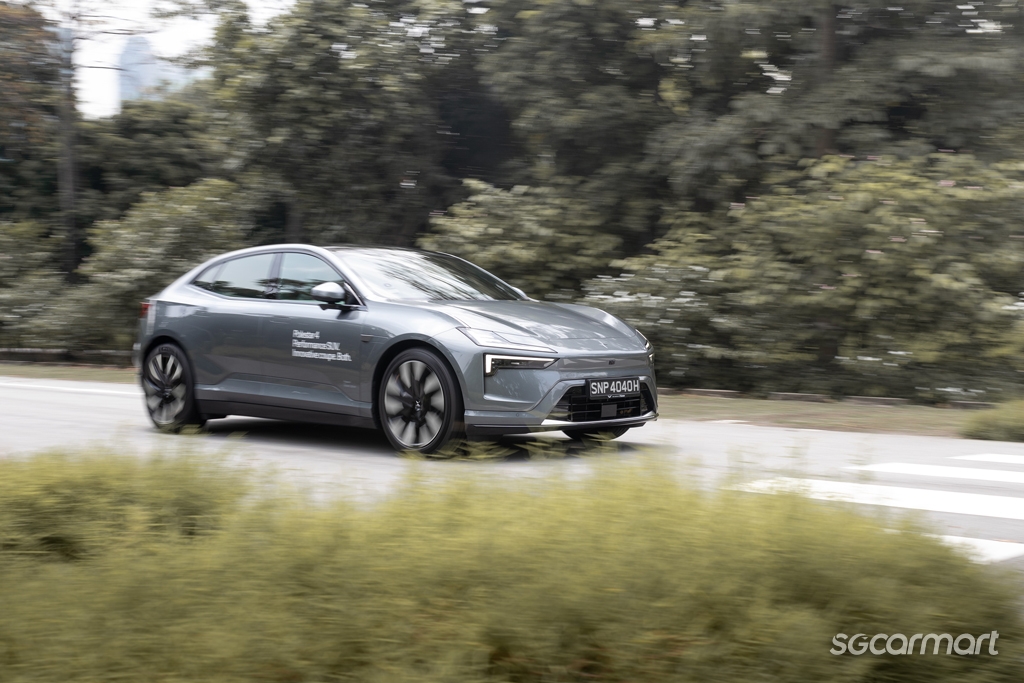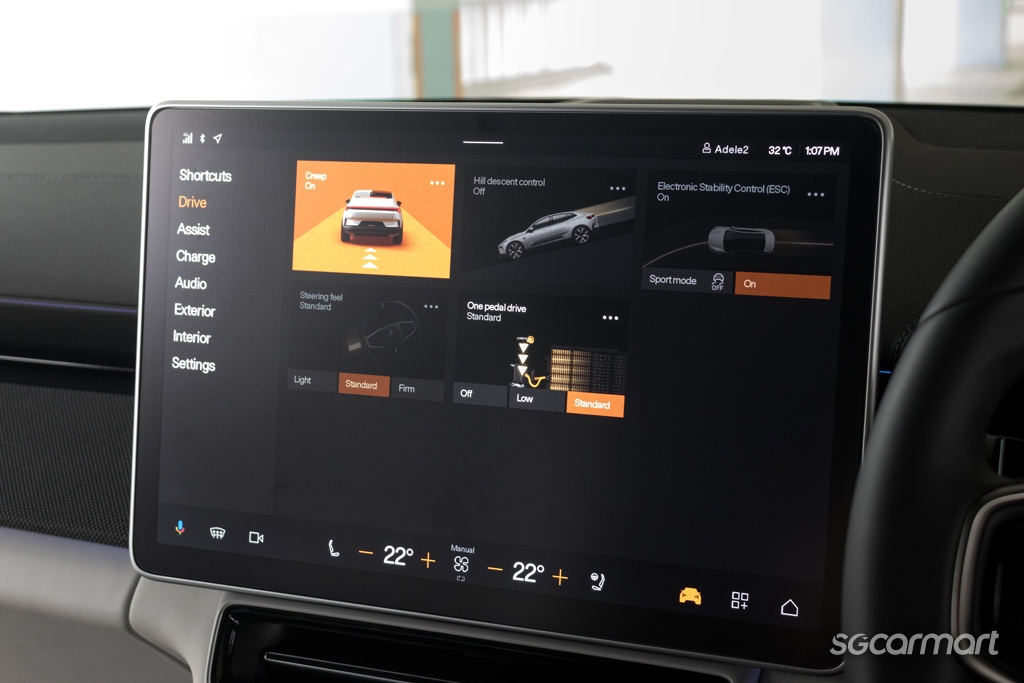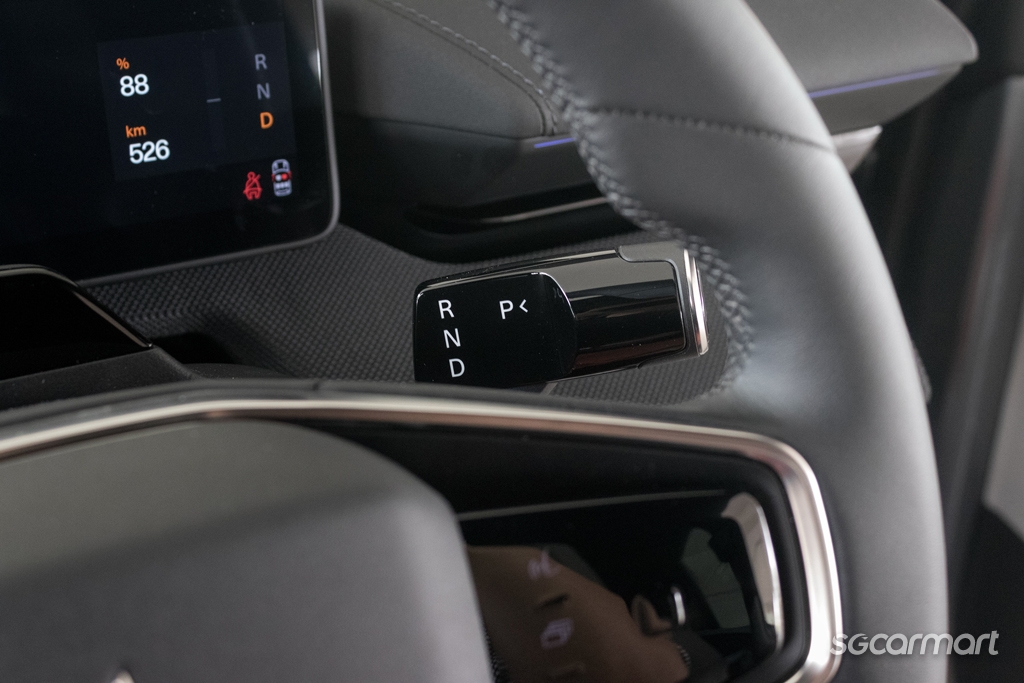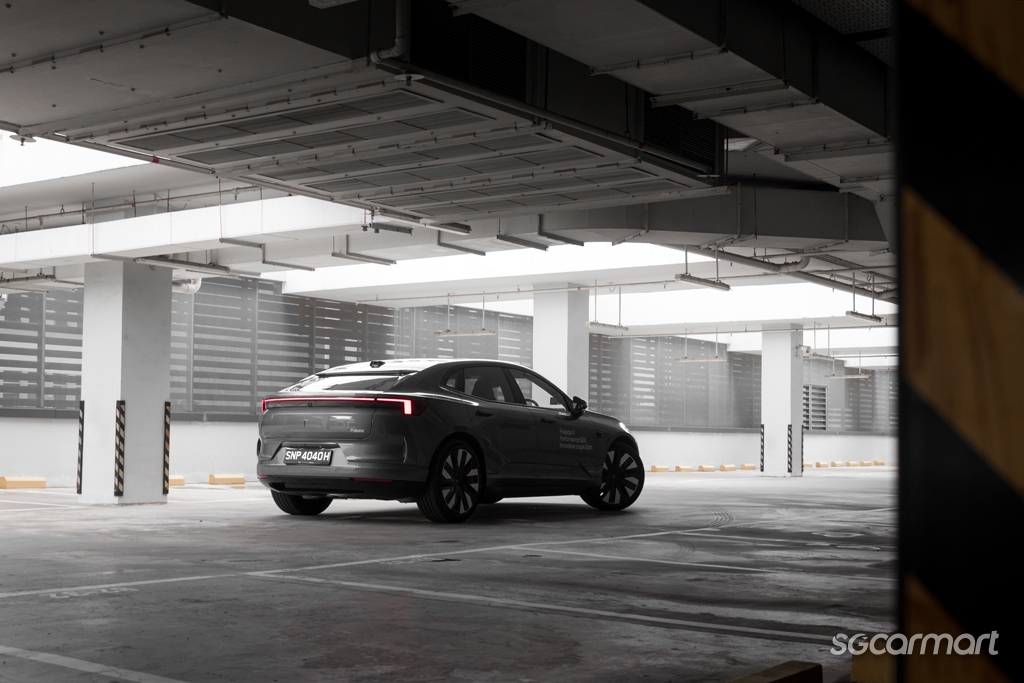Polestar 4 Long Range Single Motor Review
10 Apr 2025|4,205 views
What We Like
Better balance from rear-wheel drive
Potent, usable performance
Sublime cabin fittings
Intuitive controls
Feels nimbler than LRDM model
What We Dislike
Mood lighting needs more hues
Windowless rear still polarises opinions
Still need to tap key fob on B-pillar at times
If you walked into the Polestar showroom along Leng Kee Road and wanted the quickest model available, you'd be quickly shown to the Polestar 4 Long Range Dual Motor (LRDM).
With 536bhp, 686Nm of torque, and a zero to 100km/h time of 3.8 seconds, its acceleration approaches supercar territory. At full tilt, the driver of an exotic machine may wonder why he or she can't seem to shake this 'SUV coupe'.
Though this sounds like fun, it's probably too much performance for most people who want a car for office commutes, school runs, and errands. Plus, while 536bhp sounds like fun, it also attracts a painful annual road tax of $5,744.
It's hard to tell the LRSM apart from the LRDM, unless the latter is equipped with the optional Performance pack that has obvious visual differences
A better alternative
An even more attractive option is the Polestar 4 Long Range Single Motor (LRSM). Apart from costing $50,000 less, its yearly road tax bill is $2,088 or less than half compared to the LRDM variant.
However, dollar figures don't tell the whole story. What makes the Polestar 4 LRSM compelling is that despite being the 'entry-level' model, it has the same level of equipment as the LRDM variant.
That means both have the full suite of driver assistance and safety features, such as Cross Traffic Alert with brake support, Adaptive Cruise Control, Front and Rear Collision Avoidance, and Lane Keeping Aid, just to name a few.
Both models also come with the Plus pack and Pilot pack as standard, which includes Zinc deco, Pixel LED head lights, along with a head-up display, three-zone climate control, and reclining rear seats. That said, the Polestar 4 LRSM cannot be specified with the optional Performance pack, as this is restricted to the LRDM model.
Slide onto the driver's seat and you'll be ensconced in a blend of welcome simplicity and intuitive technology. There are many reasons why 'Scandi' is a popular theme among homeowners - most will say it gives a soothing, cool and welcoming vibe. Polestar has also clearly worked hard on making the cockpit and infotainment system as user-friendly as possible - even if you've never driven a Polestar, you can get the hang of it fairly easily.
The seats are another perk, striking an excellent balance between comfort and support. Rear occupants have it even better, as the backseats can be electrically reclined, thus allowing passengers to better enjoy the plentiful legroom.
Backseat passengers have plenty of room to stretch out, while the B-pillar vents ensure optimal cooling
Less power, more fun
A large part of what makes the Polestar 4 LRSM such a delight is that it has half the power of its LRDM sibling. The other half of the equation is its rear-wheel drive layout.
It sounds illogical: How can the LRSM's 200kW (268bhp) and 343Nm of torque be better than the LRDM's 400kW (563bhp) and 686Nm, and all-wheel drive?
On paper, more ponies should equal more fun. More traction should mean more confidence. But during a short stint in the Polestar 4 LRDM, the car felt large and unwieldy. An additional motor and double the kilowatts make the car exceedingly quick, but they do not automatically translate into more smiles.
Since electric powertrains deliver instantaneous performance, EVs tend to feel effortless compared to ICE vehicles. There's no need to build revs or utilise turbochargers, and even a moderately powered electric runabout never feels like it's struggling.
Hence, it doesn't matter that the LRSM only has half the power. From the beginning, it felt nimbler and more spirited than the LRDM, eagerly surging forward with a welcome yet controllable linearity. It helps that it is 125kg lighter its sibling (2,230kg vs 2,355kg).
This lightness makes it a breeze to pilot, with the 'SUV coupe' coolly pivoting around corners. With a 'traditional' rear-wheel drive layout, the feeling of the car pushing you forwards is stronger, while the nose is more 'biddable', too.
That's not to say that the LRSM isn't quick on its feet. Pin the accelerator pedal to the floor and the plentiful torque ensures the car does zero to 100km/h in 7.1 seconds - still significantly quicker than most cars on the road. While nowhere as rapid as the LRDM's time of 3.8 seconds, the advantage here is that nailing the right pedal won't immediately result in silly speeds and the possibility of losing your licence.
All told
Drivers who demand more performance will still prefer the LRDM model, whose ability to rocket off the line and even keep pace with a supercar are talents to be admired.
Realistically, however, the LRSM is not only more than enough - it also strikes a happier balance. There's no need for all-wheel drive because it doesn't snow here. And rather than having to modulate so much horsepower, being able to use the existing power (which means less road tax) makes a car more enjoyable.
The latter point is what resonated with me. Ridiculously rapid EVs are compelling, but the LRSM, with its well-appointed cabin and more balanced athleticism, proves even more convincing than its sibling.
These reviews may also interest you
The Macan offers polished handling and serves as a great rebuttal against those who question the need for driver-oriented cars in an electric age
The BYD Sealion 7 combines space and comfort together with more power than you realistically need
What We Like
Better balance from rear-wheel drive
Potent, usable performance
Sublime cabin fittings
Intuitive controls
Feels nimbler than LRDM model
What We Dislike
Mood lighting needs more hues
Windowless rear still polarises opinions
Still need to tap key fob on B-pillar at times
If you walked into the Polestar showroom along Leng Kee Road and wanted the quickest model available, you'd be quickly shown to the Polestar 4 Long Range Dual Motor (LRDM).
With 536bhp, 686Nm of torque, and a zero to 100km/h time of 3.8 seconds, its acceleration approaches supercar territory. At full tilt, the driver of an exotic machine may wonder why he or she can't seem to shake this 'SUV coupe'.
Though this sounds like fun, it's probably too much performance for most people who want a car for office commutes, school runs, and errands. Plus, while 536bhp sounds like fun, it also attracts a painful annual road tax of $5,744.
It's hard to tell the LRSM apart from the LRDM, unless the latter is equipped with the optional Performance pack that has obvious visual differences
A better alternative
An even more attractive option is the Polestar 4 Long Range Single Motor (LRSM). Apart from costing $50,000 less, its yearly road tax bill is $2,088 or less than half compared to the LRDM variant.
However, dollar figures don't tell the whole story. What makes the Polestar 4 LRSM compelling is that despite being the 'entry-level' model, it has the same level of equipment as the LRDM variant.
That means both have the full suite of driver assistance and safety features, such as Cross Traffic Alert with brake support, Adaptive Cruise Control, Front and Rear Collision Avoidance, and Lane Keeping Aid, just to name a few.
Both models also come with the Plus pack and Pilot pack as standard, which includes Zinc deco, Pixel LED head lights, along with a head-up display, three-zone climate control, and reclining rear seats. That said, the Polestar 4 LRSM cannot be specified with the optional Performance pack, as this is restricted to the LRDM model.
Slide onto the driver's seat and you'll be ensconced in a blend of welcome simplicity and intuitive technology. There are many reasons why 'Scandi' is a popular theme among homeowners - most will say it gives a soothing, cool and welcoming vibe. Polestar has also clearly worked hard on making the cockpit and infotainment system as user-friendly as possible - even if you've never driven a Polestar, you can get the hang of it fairly easily.
The seats are another perk, striking an excellent balance between comfort and support. Rear occupants have it even better, as the backseats can be electrically reclined, thus allowing passengers to better enjoy the plentiful legroom.
Backseat passengers have plenty of room to stretch out, while the B-pillar vents ensure optimal cooling
Less power, more fun
A large part of what makes the Polestar 4 LRSM such a delight is that it has half the power of its LRDM sibling. The other half of the equation is its rear-wheel drive layout.
It sounds illogical: How can the LRSM's 200kW (268bhp) and 343Nm of torque be better than the LRDM's 400kW (563bhp) and 686Nm, and all-wheel drive?
On paper, more ponies should equal more fun. More traction should mean more confidence. But during a short stint in the Polestar 4 LRDM, the car felt large and unwieldy. An additional motor and double the kilowatts make the car exceedingly quick, but they do not automatically translate into more smiles.
Since electric powertrains deliver instantaneous performance, EVs tend to feel effortless compared to ICE vehicles. There's no need to build revs or utilise turbochargers, and even a moderately powered electric runabout never feels like it's struggling.
Hence, it doesn't matter that the LRSM only has half the power. From the beginning, it felt nimbler and more spirited than the LRDM, eagerly surging forward with a welcome yet controllable linearity. It helps that it is 125kg lighter its sibling (2,230kg vs 2,355kg).
This lightness makes it a breeze to pilot, with the 'SUV coupe' coolly pivoting around corners. With a 'traditional' rear-wheel drive layout, the feeling of the car pushing you forwards is stronger, while the nose is more 'biddable', too.
That's not to say that the LRSM isn't quick on its feet. Pin the accelerator pedal to the floor and the plentiful torque ensures the car does zero to 100km/h in 7.1 seconds - still significantly quicker than most cars on the road. While nowhere as rapid as the LRDM's time of 3.8 seconds, the advantage here is that nailing the right pedal won't immediately result in silly speeds and the possibility of losing your licence.
All told
Drivers who demand more performance will still prefer the LRDM model, whose ability to rocket off the line and even keep pace with a supercar are talents to be admired.
Realistically, however, the LRSM is not only more than enough - it also strikes a happier balance. There's no need for all-wheel drive because it doesn't snow here. And rather than having to modulate so much horsepower, being able to use the existing power (which means less road tax) makes a car more enjoyable.
The latter point is what resonated with me. Ridiculously rapid EVs are compelling, but the LRSM, with its well-appointed cabin and more balanced athleticism, proves even more convincing than its sibling.
These reviews may also interest you
The Macan offers polished handling and serves as a great rebuttal against those who question the need for driver-oriented cars in an electric age
The BYD Sealion 7 combines space and comfort together with more power than you realistically need
Also read our comparison article on:
Polestar 4 LRSM vs Porsche Macan ElectricCar Information
Polestar 4 Electric Long Range Single Motor 100 kWh (A)
$335,000
CAT B|Electric|5.5km/kWh
Horsepower
200kW (268 bhp)
Torque
343 Nm
Acceleration
7.1sec (0-100km /hr)
Promotion
Polestar 4 Pre-Expo Specials from $293K. Plus, receive an additional $5K discount when you book by April. Terms apply.
Read moreThank You For Your Subscription.
- A Better Alternative
- Less Power More Fun
- All Told












































